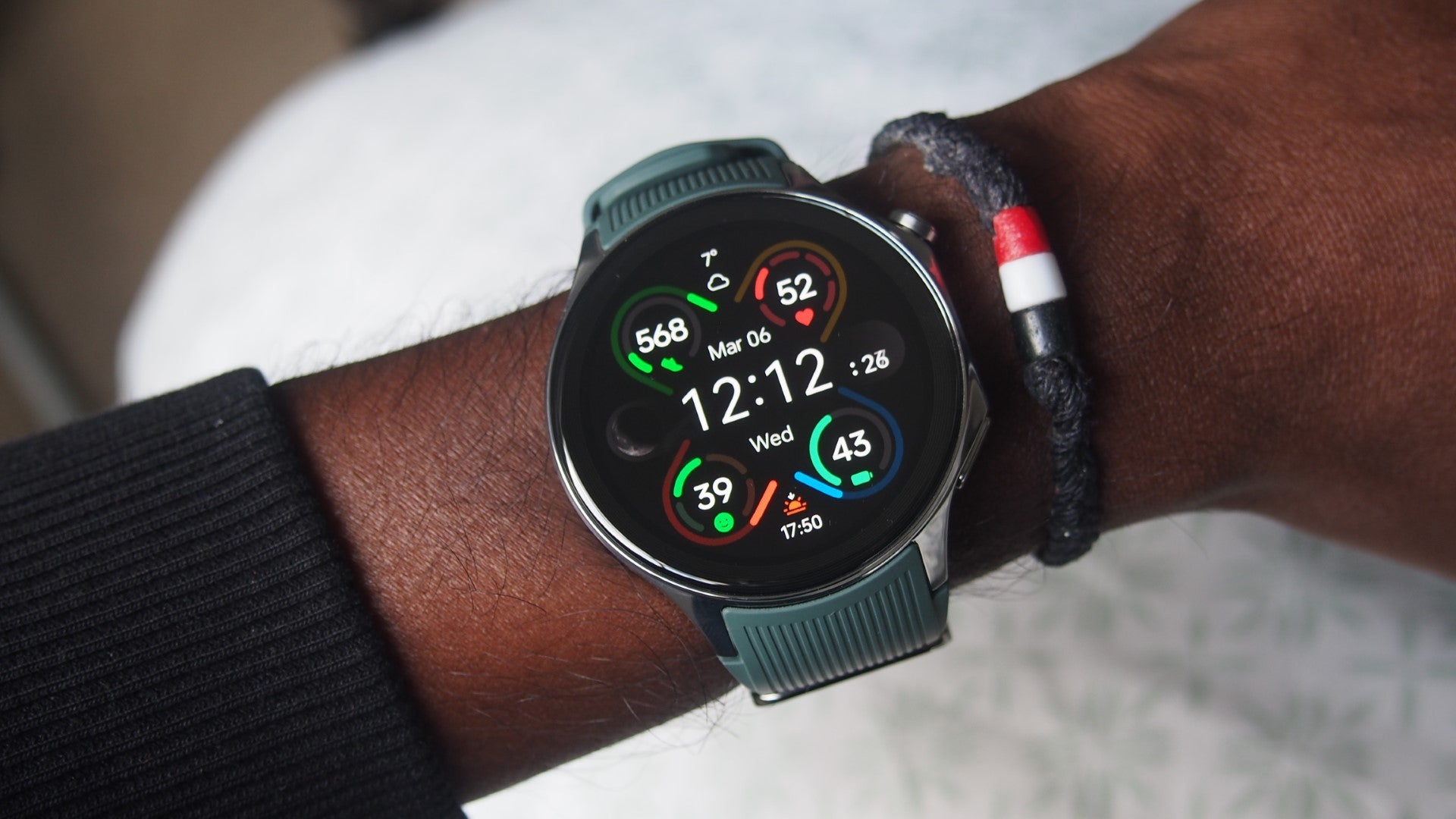Garmin Enduro 2 Review
Battery life champion?
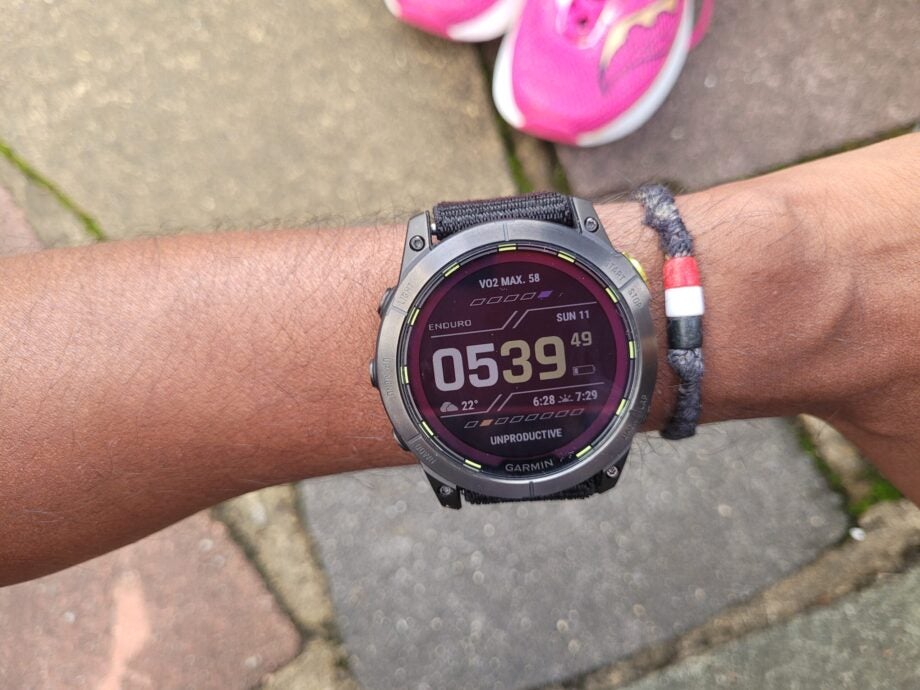

Verdict
The Garmin Enduro 2 offers an improvement over the first-gen model, thanks to the addition of mapping, Garmin’s useful Multi-band tracking mode, and improved battery during tracking. The price makes the watch difficult to justify over Garmin’s cheaper Fenix 7-series models, whose feature set is similar and where battery life remains impressive for less.
Pros
- Full-colour mapping added
- New Multi-band mode boosts tracking accuracy
- Slightly refined design
Cons
- Expensive
- Design will still be big for some
- Smartwatch battery numbers are down
Availability
- UKRRP: £929
- USARRP: $1099
Key Features
- Excellent enduranceUp to 110 hours of GPS battery life
- Mapping skillsMulti-continent TOPO maps
- High-end sensorsMulti-band GPS and SatIQ technology
Introduction
The Garmin Enduro was added to the company’s already extensive family of watches in 2021. With the Enduro 2, Garmin is continuing to target endurance athletes and ultra-runners, who want all of those big Garmin tracking features but with the addition of generous battery life, too.
Alongside impressive battery life, the Enduro 2 also includes some desirable features already seen in other Garmin watches. There’s Multi-band GNSS to boost outdoor tracking accuracy, the mapping and music features that were missing from the first Enduro, and this model even has a flashlight.
However, those features arrive at a premium, so are they really worth the money?
Design
- Always-on 1.4-inch transflective display
- 70g weight
- 51mm case
- Waterproof up to 100 metres
The first Enduro was quite a hulking watch – and that hasn’t changed with the Enduro 2. The 51mm polymer case remains, but now Garmin drops the option of a stainless steel bezel watch, offering just one model with a titanium bezel.
It’s a wise move. Having used both stainless steel and titanium versions of the first model, the latter certainly felt the nicer-looking of the two – and, crucially, was the lighter on the wrist, too.
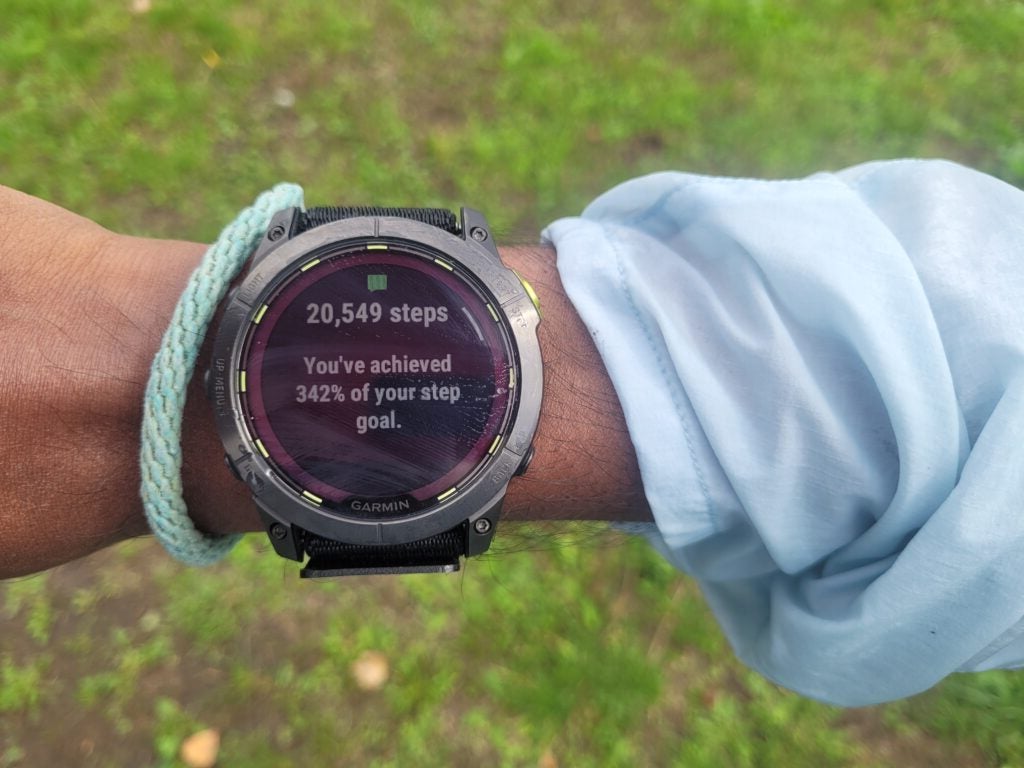
The titanium version is slightly thicker now, though, jumping up from 14.9mm to 15.6mm. While it isn’t as slender as the previous model, it hasn’t been uncomfortable to wear – but you’ll certainly know it’s there. Note that it isn’t a very subtle device to wear to bed for tracking your sleep, though.
Front and centre, the display is the same size and resolution as the screen found on the first Enduro. That’s an always-on 1.4-inch, 280 x 280 transflective display. No AMOLED as seen in Garmin’s Venu or Epix watches, then, but that’s hardly surprising given that adding a more power-hungry AMOLED would have invariably impacted battery performance.
Nevertheless, the screen is nice and big, offering great visibility in bright outdoor light – and it’s in such scenarios that using a transflective display really pays off. You do get some colour here but, not surprisingly, it’s more muted than what you’ll see on AMOLED – although it does make viewing maps on the Enduro 2 far more comfortable.
The panel here is touchscreen, too – which has been quite easy to forget. However, it does make the experience of swiping up and down to view Garmin’s widgets or workout modes far more pleasant. You’ll likely reach for the array of physical inputs dotted around the case, though, with the button at the top right adding a flash of colour.
At the top of the case you’ll spy a thin LED strip, which signals the Enduro 2’s flashlight feature, first introduced on the Fenix 7X. Garmin says it’s brighter and offers an extra source of light when you’re adventuring at night. It’s surprisingly bright, plus you can set it to pulsate or switch to a red LED colour in the event you need to signal that all is not well.
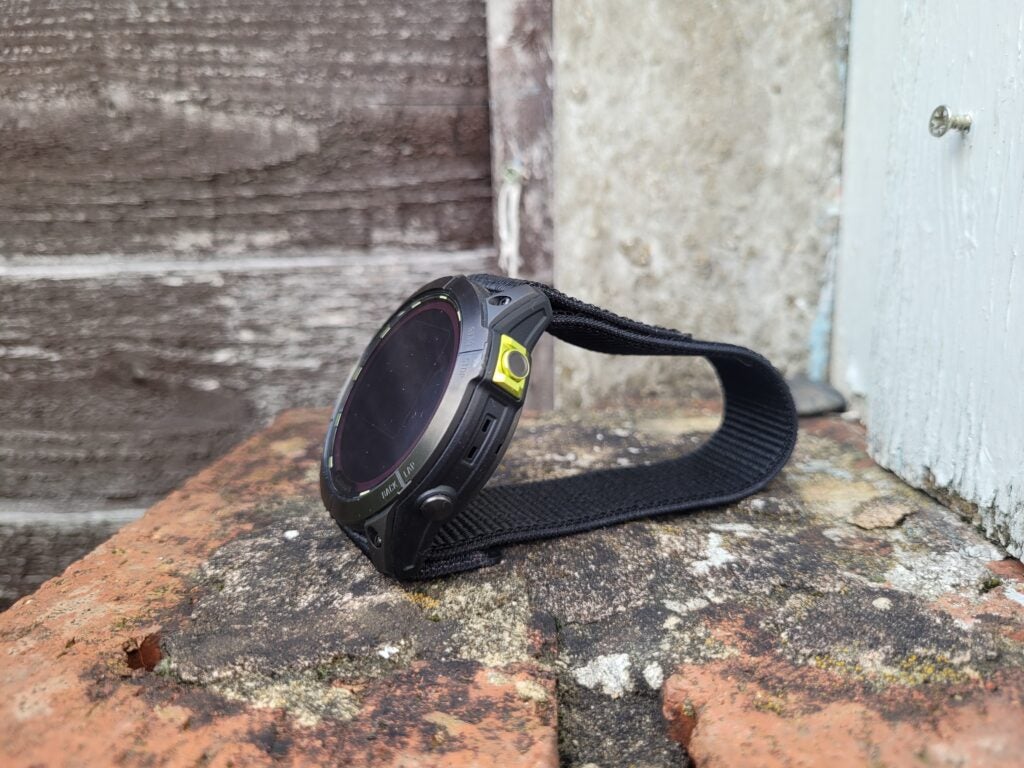
Keeping that big case on your wrist is a 26mm nylon strap, which Garmin introduced with the first Enduro. So far that strap has been super-comfy to wear, offering a snug fit; it’s easy to loosen as well. However, note that over the longer-term, that same strap in the first-gen Enduro did start to lose some of its velcro stickiness – and a replacement isn’t cheap.
The Enduro 2 also offers the same 10-ATM water rating of the original device, which means it will survive being submerged in water up to 100 metres in depth.

Tracking and Features
- TOPO mapping
- Multi-band GNSS and SatIQ technology
- Grade adjusted pace
- HRV Status and Training Readiness
The Enduro was a solid performer, and like Garmin’s Fenix range, arrived packed with indoor and outdoor tracking modes, performance metrics, training and analysis features. It performed well in the capacity of a smartwatch, too.
In use, it felt very similar to a Fenix, albeit with Garmin’s decision to cut some features. There was only breadcrumb navigation as opposed to full mapping support, and there was no built-in music player either. Their omission appeared to be in order to ensure the Enduro delivered those big battery numbers.
With the Enduro 2, Garmin delivers those features missed, alongside the original lineup, while also bringing in features from Garmin’s latest watches as well.
Arguably the most notable is the addition of Multi-band GNSS, which is joined by SatIQ technology. The two are designed to improve tracking accuracy in those areas it proves problematic to secure a reliable satellite signal. Here, we’re talking about built-up areas such as city centres with multiple tall buildings, or dense forests or woods.
That SatIQ technology chooses the appropriate GPS mode depending on your environment. So if you’re in an open area, for example, it could choose to opt for a low power GPS mode instead. The aim is to deliver the best accuracy for the scenario you’re in, while also preserving battery life.
This serves to make the Enduro 2’s already beefy battery even better – although using Multi-band mode will prove a bigger drain on the battery compared to other modes. Just over two hours of running saw the battery drop by 6%, which may not sound like a lot, but less power-intensive GPS modes will make less of a dent in the battery. The Multi-band feature is very good, but it’s the SatIQ tech that ensures you’re using it at the right times.
Core tracking modes comprise running, cycling, swimming and golf. There’s a dedicated ultra-running mode, plus the adventure racing mode from the first-gen Enduro, which will let you view heart rate and elevation metrics while also recording GPS data.
There are plentiful outdoor tracking modes, too, including rowing, kayaking, hiking and fishing. These are elevated by the addition of multi-continent Topo maps, which come preloaded. It’s the same level of mapping support you get from Garmin’s latest Fenix watches, offering some touchscreen navigation, too; but you do still need those buttons to navigate maps. Garmin offers arguably the best mapping support on a sports watch – and that doesn’t change with the Enduro 2. Mapping detail is rich and it’s easy to follow directions and pick out key locations nearby.
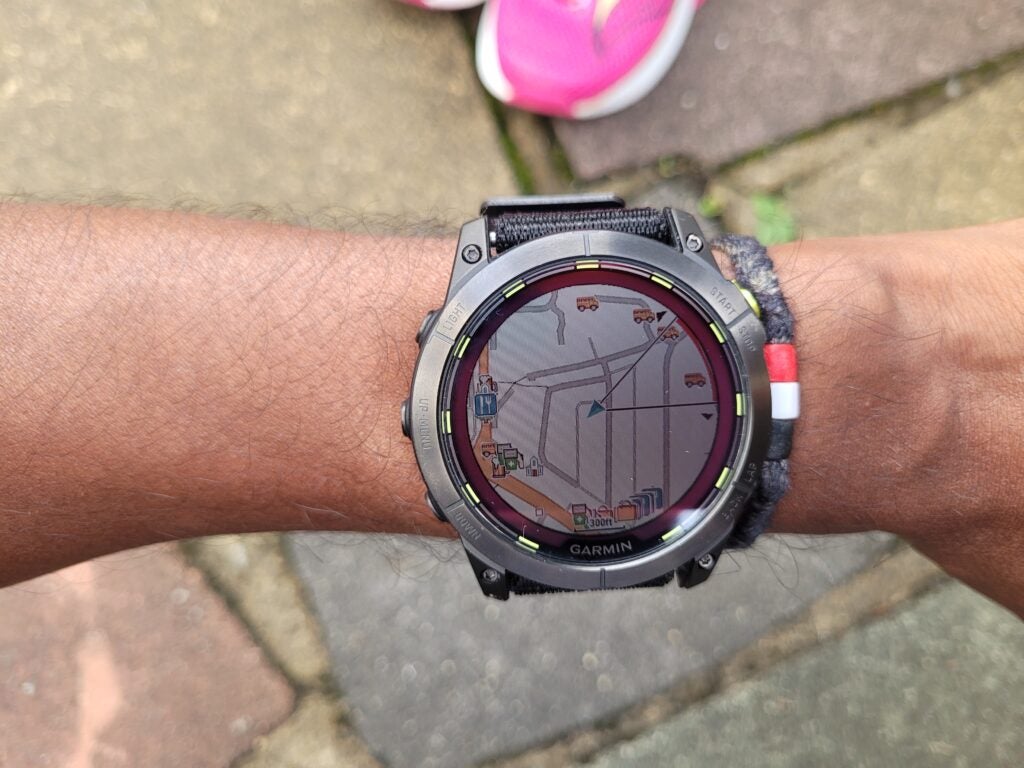
Overall, the core tracking experience is excellent, just as you’d expect from a top-end Garmin device. In my experience, distance tracking was accurate. Heart rate tracking accuracy was decent for most steady-paced workouts, but faltered at high intensity, but the Enduro 2 certainly isn’t the worst performer I’ve tested.
Thankfully, you can pair up an external heart rate sensor for more accurate results in high-intensity workouts. There’s a PulseOx sensor for tracking blood oxygen levels during sleep or fuelling the onboard altitude acclimation status. However, note that in continuous use this feature will have a noticeable impact on battery life.
With the Enduro 2 you’re in receipt of the same training and analysis features as the first Enduro, with the most notable additions being Garmin’s much-improved visual race predictor and grade-adjusted pace to better understand how to vary your speed across tougher terrain.
Garmin also includes HRV Status and Training Readiness, which delves into metrics such as heart rate variability, sleep and stress history, to indicate those time you should train and rest. It provided pretty good guidance for better understanding the factors that might be contributing to that Training Readiness score being great or poor. I ran with both the Enduro 2 and the Garmin Epix 2; both watches delivered the same Training Readiness scores.
As a smartwatch, the Enduro 2 delivers notification support, Garmin Pay, Connect IQ Store access and Garmin’s safety features – which do still require your phone, if you want to signal you’re in distress. Also now part of the lineup is a built-in music player, which supports offline playlist syncing with Spotify, Amazon Music and Deezer, if you have a subscription for those services.
You’re getting the best Garmin has to offer here, and that added touchscreen support does make features such as notifications and music controls far nicer with which to interact.
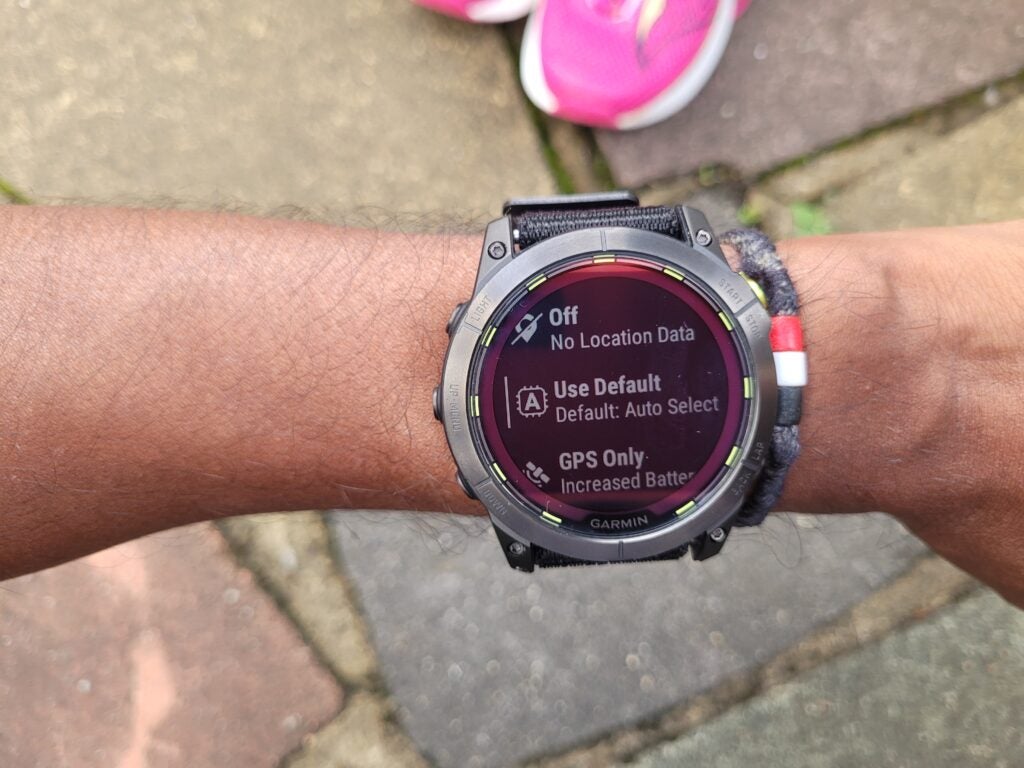
Battery Life
- Up to 46 days in smartwatch mode (with solar)
- Up to 150 hours GPS battery life (with solar)
- Up to 550 days in battery saver mode (with solar)
The first Enduro really was a battery powerhouse. I managed to get a month of use out of it before it needed charging, using regular tracking and features such as notifications and continuous heart rate monitoring. Here, that performance is bolstered by the very good power management features from Garmin’s Fenix watches.
On comparing the Enduro and Enduro 2’s battery life numbers, you can see both gains and losses. The numbers quoted for smartwatch battery life have dropped from 50 days to 34 days (without solar). GPS battery life is up by 30 hours, going from 70 hours to 100 hours – again, without including solar.
Solar does offer a boost, particularly in the battery-saver mode, which can potentially go for as long as 550 days. That’s better than the one-year promised on the Enduro. Reaping the benefits of that Power Glass lens, which enables solar-charging, will require spending a lot of time outside on a regular basis. So unless your life is mainly spent outdoors, the quoted number with solar actually feel a little irrelevant.
Viewing the non-solar numbers, I’d say that smartwatch battery life has reduced. That may in part be down to using the Multi-band GNSS mode, which – as I’ve experienced with other Garmin watches that offer the feature – does drain battery life more quickly. I’d say I was getting closer to 2.5-3 weeks.
For most people, the full GPS mode should offer good enough accuracy – and that does see a boost.
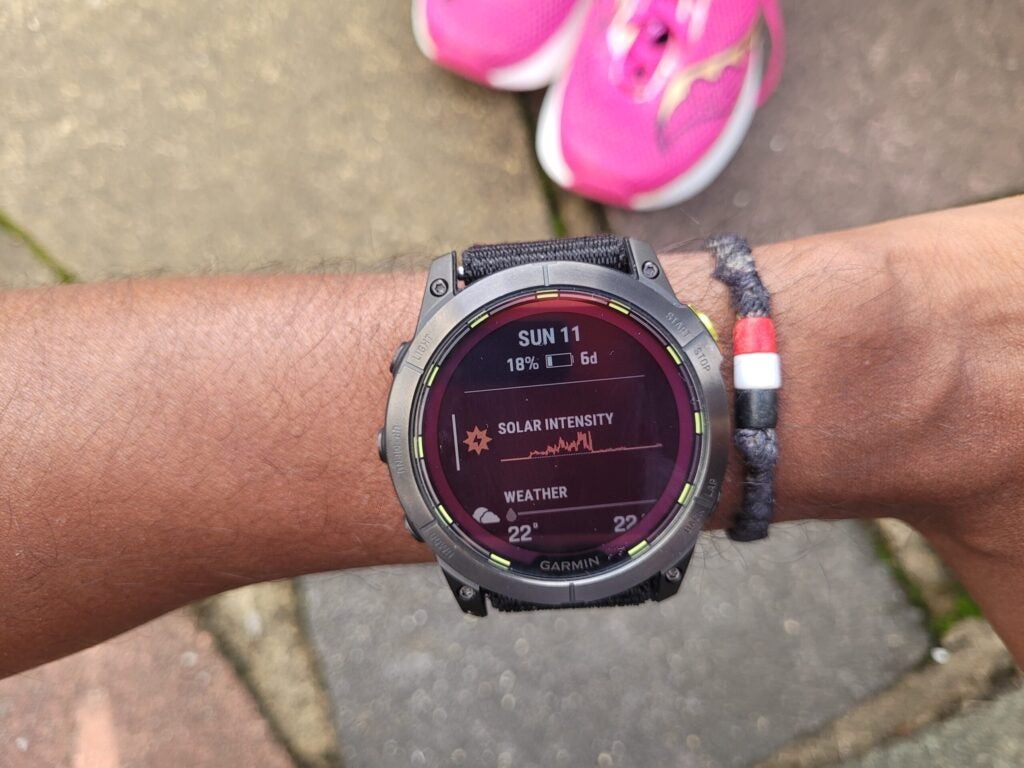
Latest deals
Should you buy it?
You want an outdoor watch with a generously sized battery for tracking: While smartwatch battery figures appear to have dropped, it’s seen a boost in the Enduro 2 when it comes to putting the device’s many tracking features to good use.
You want a good-value, high-end sports watch: The Enduro 2 is expensive, and you could certainly pay less for a Fenix 7 or an Epix and still get a good mix of performance and battery life.
Final Thoughts
It’s no surprise to find that the Garmin Enduro 2 offers a really strong sports tracking experience; it’s essentially a Fenix 7X with a boosted battery. However, that extra battery life doesn’t feel enough to justify the Enduro 2’s high price.
Garmin might need to think about offering more unique features on the Enduro 2 to really make it worth spending nearly £1000/over $1,000 and not going for a cheaper Fenix instead.
How we test
We thoroughly test every smartwatch we review. We use industry standard testing to compare features properly and we use the watch as our main device over the review period. We’ll always tell you what we find and we never, ever, accept money to review a product.
Worn as our main smartwatch during the testing period
Heart rate data compared against dedicated heart rate devices
Side-by-side GPS comparison with our best scoring smartwatches
FAQs
In our testing, we found the battery lasted for up to 46 days in smartwatch mode (with solar), upp to 150 hours GPS battery life (with solar) and up to 550 days in battery saver mode (with solar)




